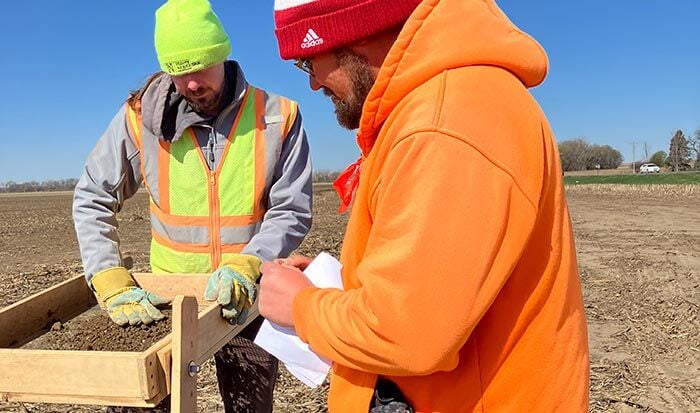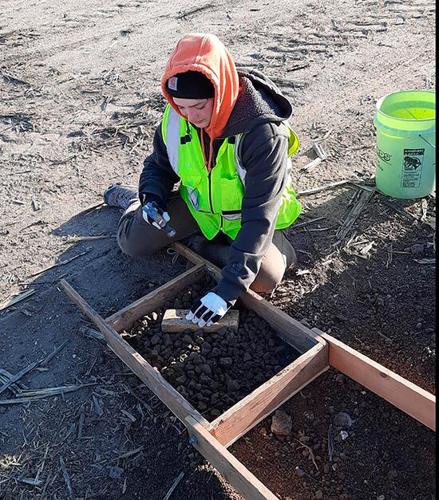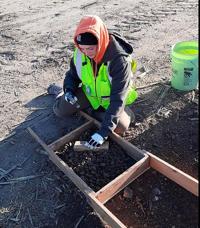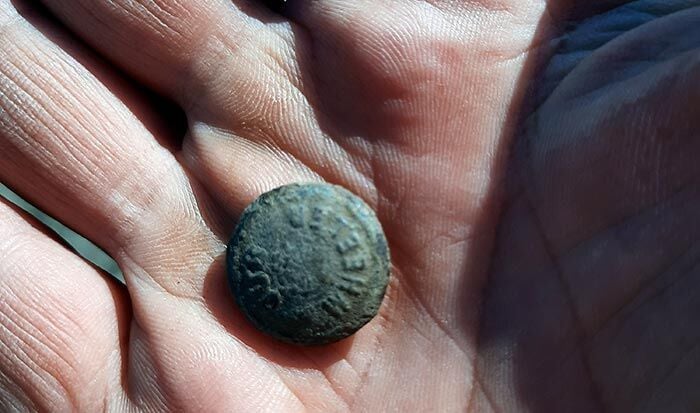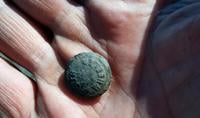PILGER — Patience and perseverance are attributes needed by people who like to uncover bits and pieces of the past by digging in the dirt.
For the few days, a contingent of archaeologists and technicians with those attributes have been searching for clues to the past at a former homestead site just north of Pilger. The plot of land along Highway 275 was homesteaded in 1865 by Charles Sharp. By 1872, Sharp had "proved up" the property by building a 16-by-24-foot, 1½-story, three-room house with a cellar as well as a stable and granary. Structures stood on the property until the 1980s. Since then, the land has been farmed.
The team from the Nebraska State Historical Society is slowly and methodically examining the site now because it's in the path of the 10-mile expansion of Highway 275 from two to four lanes between the Stanton spur and the intersection with Highway 15.
The archaeologists could be seen in their orange vests and jackets searching 1-meter square grids, shaving off layer after layer of dirt that was sifted through a quarter-inch mesh screen to filter anything of value.
"We keep scraping off layers to get the big picture," said Nolan Johnson, a society archaeologist who is spearheading the project. "The archival record from the 1860-1880s is scant, and archaeology is an important tool for filling in those gaps in our understanding of how people lived in Nebraska in the past."
This is one of many such digs the society and Nebraska Department of Transportation complete every year.
"The partnership between NDOT (Nebraska Department of Transportation) and NSHS (Nebraska State Historical Society) is very important to both agencies," said Dave Williams, Nebraska state archaeologist. "Our partnership began in 1960, six years before the passage of the National Historic Preservation Act, which is at the heart of the work we do with the NDOT. Hundreds, if not a few thousand, archaeological sites have been documented as part of our cooperative work."
This site came to the attention of the historical society after the tornado hit the area in 2014, Johnson said. The storm uncovered artifacts that led to further investigation and the discovery of architectural debris such as bricks, metal hinges, glass, stoneware, pliers, horseshoes and other items.
To help guide this search, the archaeologists used a geophysical survey of the property that showed where the ground had been disturbed, which could indicate where structures may have been located, Johnson said.
During the first few days of work, they discovered old nails, bits and pieces of glass, brick, coal and other items as well as a concrete block with a rod protruding from it. Johnson was hoping to locate other areas — such as an outhouse pit or cellar — that had not been affected by farming and might yield more intact artifacts.
Once the search is complete, nearly all recovered artifacts will be collected for cleaning, processing, analysis and storage at the state archaeology office in Lincoln. Following analysis, a comprehensive project report will be released detailing the excavations and providing interpretive results of the team's findings.
"The Sharp Homestead is a significant archaeological site due to its age," Johnson said. "It has the potential to inform us about the evolution of farming practices in Nebraska."

